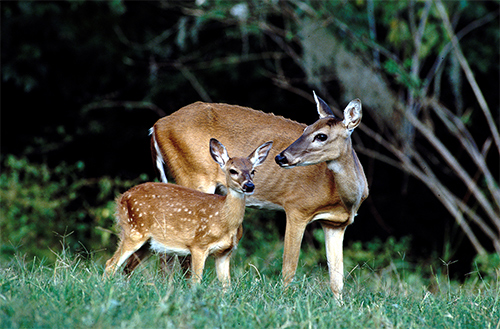MSU experts address Chronic Wasting Disease potential risk in humans
Contact: Vanessa Beeson

STARKVILLE, Miss.—Mississippi State scientists and leading experts in deer and prion research are weighing in on recent news about deer diseases and potential risk to human health.
A recent brief published in the journal Neurology stated that in 2022, two hunters from the same hunting lodge were afflicted with sporadic Creutzfeldt-Jakob disease, or CJD. Steve Demarais, Mississippi State’s Taylor Chair in Applied Big Game Research and Instruction discussed the abstract and what hunters and the public should know.
Both the human CJD disease and Chronic Wasting Disease (CWD)—affecting deer, elk and moose—are caused by a misfolded protein called a prion.
Demarais, co-director of the MSU Deer Lab and scientist in the university’s Forest and Wildlife Research Center, has studied the ecology of white-tailed deer for more than 40 years. Much of his recent research focuses on CWD, similar to CJD. Since the first case of CWD was reported in Mississippi in 2016, he has been the state’s foremost expert driving CWD research, including pioneering environmental testing of the disease’s presence across the landscape. He also leads outreach programs informing hunters and the public about this disease.
“It’s important for people to think critically when considering this news. This was a synopsis presented at a meeting and Neurology published it. Since CJD is so rare, there is cause for concern but there are still so many unknowns regarding this case. We know the two subjects had a history of consuming venison, but we don’t know if they ingested meat that tested positive for CWD. The scientists who published the brief themselves noted that more research is needed. At this point, research has not demonstrably proven that CJD was caused by CWD,” Demarais explained.
While there are normal proteins in all mammals that follow a normal cycle of life—serving a function, then degrading and shedding from the body—when a misfolded prion encounters normal protein, it causes the latter to refold into the prion’s abnormal shape. These misfolded prions can’t break down, so they build up and damage neural tissue, ultimately leading to mortality.
Assistant Professor Galen Collins in MSU’s Department of Biochemistry, Molecular Biology, Entomology and Plant Pathology, is an expert in intracellular protein degradation. Prior to joining MSU, he spent 12 years as a cell biology research fellow at Harvard Medical School. Collins discussed the research.
“The occurrence of sporadic CJD is about one in a million. The synopsis records two people located in the same space and time that came down with this disease. This is very unusual, and I think they’re right to raise concern over this. That said, more information is needed to reach a definitive conclusion about the case,” he said.
Collins, a scientist in the Mississippi Agricultural and Forestry Experiment Station, explained more about CJD in humans.
“Normal proteins are a globular shape known as the alpha helix with many turns and twists that almost look like a spiral staircase. Misfolded proteins, or prions, are long wavy sheets called beta sheets that are very stable and stick well together,” he explained.
Collins said there is a genetic form of CJD called familial fatal insomnia and there was also an increase in spontaneous incidences of the disease in Europe in the 1990s, when 200 people died due to the consumption of cows that had the prion that caused bovine spongiform encephalopathy (BSE), commonly referred to as Mad Cow Disease.
“Typically, rare spontaneous cases tend to occur in old age because it takes a long time for the alpha helix to turn into the beta sheet. But when you eat infected meat, you’re basically accelerating the process,” he said.
Collins also noted the prions that cause CWD are not killed through typical cooking methods.
William T. McKinley, deer program coordinator for the Mississippi Department of Wildlife, Fisheries and Parks (MDWFP), encourages hunters to be vigilant in testing for CWD.
“MDWFP continues to recommend that hunters submit samples from deer harvested in areas where CWD has been found and to not consume the meat from deer that tested positive for CWD. MDWFP operates over 55 CWD drop off freezers and works with over 75 cooperating taxidermists across the state. There is no cost to the hunter to get a deer tested,” he said.
Demarais echoes the sentiment to test harvested deer.
“Make informed decisions and look for collective input from scientists and health professionals. Testing for CWD is critical and easy. I’ve been a hunter all my life and as hunters we feel compelled to eat what we harvest; however, it is important to test your deer to ensure the safety of yourself and your family,” Demarais said.
For more on the MSU Deer Lab, visit www.msudeer.msstate.edu. To view the lab’s comprehensive video series about CWD, visit www.msudeer.msstate.edu/chronic-wasting-disease.php.
Mississippi State University is taking care of what matters. Learn more at www.msstate.edu.